.jpg)
.jpg)
Switchback Travel (Chris Carter)
.jpg)
.jpg)
Switchback Travel (Chris Carter)
For hikers and mountaineers alike, a quality GPS watch is a worthy addition to your gear collection. Built to handle the extremes, GPS watches have a distinct look with durable, scratch-resistant faces and large screens flanked by glove-friendly buttons. Beyond GPS tracking, these watches include ABC basics (altimeter, barometer, and compass), as well as modern fitness tracking technology, such as heart rate monitoring, activity tracking, and custom workout suggestions. You’ll see a lot of familiar faces in our seven 2024 top picks, including Casio, Suunto, and GPS giant Garmin. For more information on GPS watch features, check out our comparison table and buying advice below the picks.
Editor's note: Given the large overlap between categories, we updated this article on July 11, 2024, from the "best altimeter watches" to the "best GPS watches." This involved removing a few non-GPS-equipped picks, which we now cover in the buying advice. We also added the budget-friendly Coros Pace 3 and included information about our testing practices below the picks.
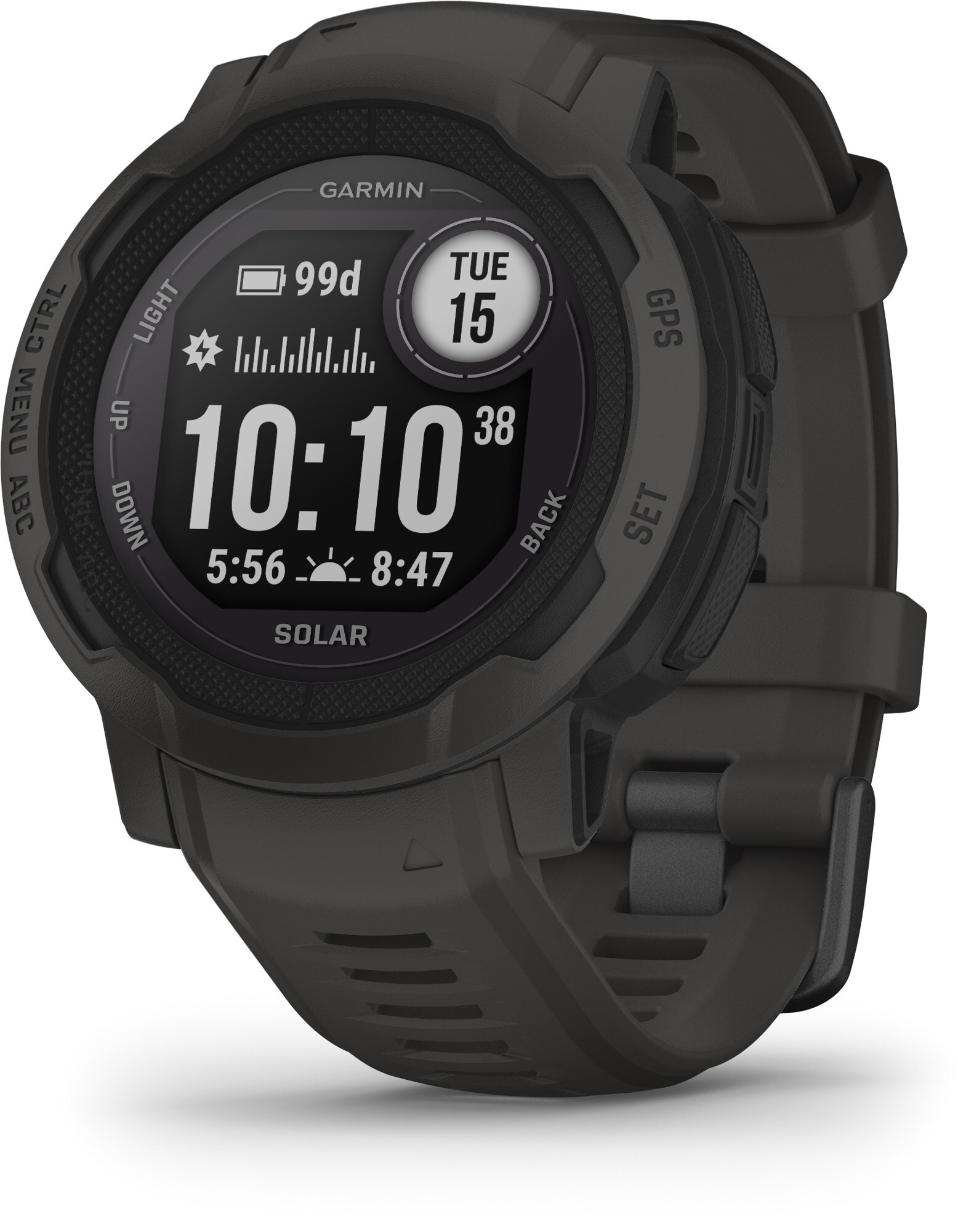 Weight: 1.9 oz.
Weight: 1.9 oz.
Battery: Lithium-ion and solar
Diameter: 40, 45, 50mm
What we like: A rugged, long-lasting GPS watch with smart features.
What we don’t: Pricey and small monochrome screen.
If you’re in the market for a do-all GPS watch, Garmin’s Instinct 2 Solar hits a fantastic balance of price and performance. The Instinct is all business on the outside, with a durable case, monochrome display, and five-button interface that’s easy to use in wet weather or while wearing gloves. This watch also features impressively modern tech, including a host of sensors, numerous activity modes with accompanying data analysis, and everyday features like health monitoring, contactless pay, and music control. To top it all off, the headlining feature is the Instinct’s substantial built-in solar panel, which gives the watch a significant boost in battery life compared to similar designs (up to 48 hours while tracking and unlimited in smartwatch mode).
The Garmin Instinct falls into a bit of a 'tweener category, combining the looks and savvy of an altimeter watch with the features of a multisport GPS design. While most hikers and mountaineers will love the added technology (many ABC watches don’t include GPS, activity tracking, or smart features), those looking for a simpler timepiece can save a lot of money with non-GPS models (we cover a few in our buying advice below). On the flip side, if budget isn't a concern, Garmin's own Fenix 7 (also below) is much more capable with a colorful display and preloaded maps that include details like location markers and topographic lines. But for a jack-of-all-trades GPS watch built for rugged environments, the Instinct 2 Solar handily gets our top spot this year.
See the Garmin Instinct 2 Solar
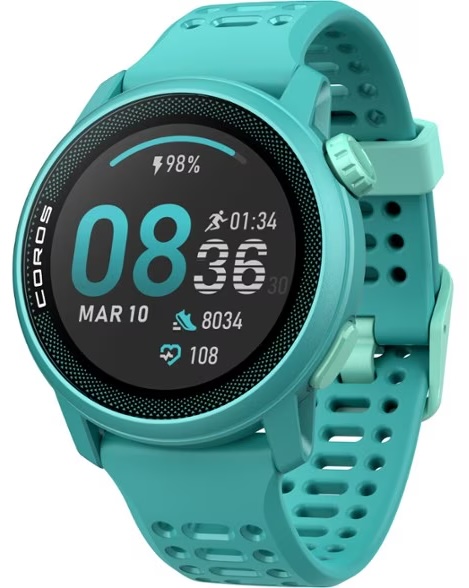 Weight: 1.4 oz.
Weight: 1.4 oz.
Battery: Lithium-ion
Diameter: 41.9mm
What we like: A budget-friendly watch that will get the job done for daily wear and light backcountry use.
What we don’t: Not as backcountry-ready as Coros’ pricier Apex 2 below.
If the price of a premium and feature-filled watch takes your breath away, Coros’ $229 Pace 3 will be a welcome relief. Despite undercutting all other picks on our list by $100 or more, the Pace doesn’t give up much in the way of functionality or performance, including ABC sensors, multisport activity tracking, and detailed sleep data. We’ve worn various Pace watches over the years and have always appreciated their low profile, ease of use, and accuracy. In fact, we’ve found the Pace’s GPS tracking, mileage, and elevation to be fairly consistent with high-end Garmin watches, which is flat-out impressive given the price. The cherry on top: The Pace 3 is the lightest watch here at just 1.4 ounces with the silicone band (or 1.1 oz. with the nylon band, which will run you an additional $20).
It’s important to note that Coros designed the Pace 3 with less of a backcountry focus than their Apex 2 below. Most notably, the polymer bezel and mineral glass screen aren’t particularly tough (the Apex uses more robust titanium alloy and sapphire glass), the battery isn’t quite as long-lasting, and you don’t get preloaded maps. But for daily tracking and light backcountry use, the Pace is an entirely capable design in an affordable and sleek package. We especially like how easily it slides under our jacket cuffs, which can’t be said of the bulkier options that dominate the market.
See the Coros Pace 3
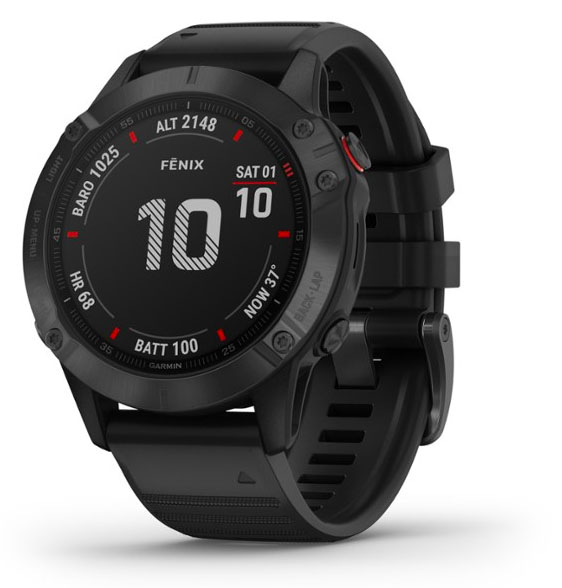 Weight: 2.8 oz.
Weight: 2.8 oz.
Battery: Lithium-ion
Diameters: 42, 47, 51mm
What we like: Top-notch navigation with preloaded road, trail, and topographic maps.
What we don’t: Expensive, heavy, and overkill for casual users.
The Instinct 2 Solar gets our top pick for its durable construction and long-lasting solar power, but explorers who want top-of-the-line GPS navigation should look to Garmin’s premier multisport watch, the Fenix 7. Like the Instinct, the powerhouse Fenix includes quality ABC sensors, accurate tracking—thanks to GPS, GLONASS, and Galileo satellite compatibility—and features like heart rate monitoring and sleep tracking. Importantly, the Fenix 7 also has the best available wrist-based mapping: detailed contour lines and extensive navigation tools that excel for activities ranging from hiking and mountaineering to trail running and skiing. Finally, while not quite up to snuff with the Instinct 2 Solar, the latest version of the Fenix also got a serious bump in battery life, which is helpful for extended trips.
The biggest downsides of the Fenix 7 are cost, complexity, and weight. Considering you can spend well under half the cost for a simpler design like the Coros Pace 3 above, the $650 MSRP for the Fenix will put it out of reach for many (the solar edition is $800, while the top-end 7X Pro Sapphire Solar will run you a whopping $1,000). What’s more, the tech is overkill for someone just looking for the basics like barometric pressure, elevation, and temperature. Finally, even in the smallest “S” form, the Fenix is on the heavy side due to its stainless steel build, and you’ll feel the extra heft during activities like running. But if you value the Garmin’s slick navigational features and don’t mind paying for extras like WiFi support and music storage, it’s one heck of a GPS watch.
See the Garmin Fenix 7
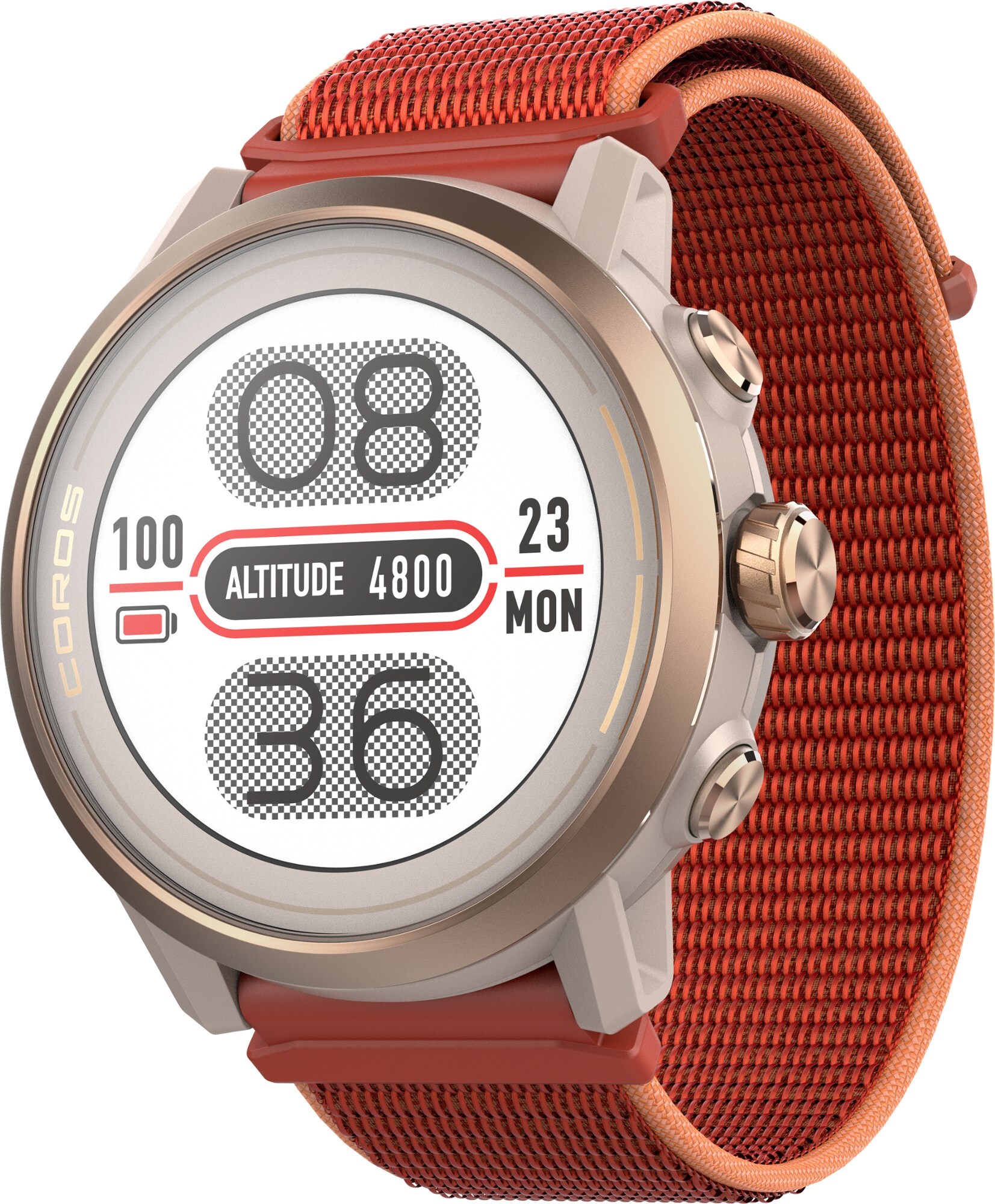 Weight: 1.9 oz.
Weight: 1.9 oz.
Battery: Lithium-ion
Diameter: 43mm
What we like: A multisport GPS watch with outstanding battery life.
What we don’t: Limited smart features and lacks the rugged appearance of an altimeter watch.
Coros might not have the brand recognition of Suunto, Casio, or Garmin, but they’re quickly gaining momentum in the outdoor watch world. Built with a clear uphill-athlete focus, their mid-range Apex 2 includes a barometric altimeter (not a given in multisport GPS watches), 29 sport modes ranging from cross-country skiing to triathlon, and a durable build with titanium alloy bezel and sapphire glass display. What’s more, we’ve found the Coros’s simple dial-and-button interface easy to use with gloves on, and you get touchscreen mapping for convenient navigation. The battery life is also outstanding at 40 hours in tracking mode and up to 14 days with simple use (the upgraded Apex 2 Pro offers 66 hours in GPS mode and a whopping 24 days with daily and sleep tracking).
The Coros Apex 2 isn’t perfect, but it does stand out in three major ways. First, you’ll be hard-pressed to find another watch at this price point that features music storage and maps/navigation (the $229 Pace 3 above does feature a barometric altimeter but lacks the Apex 2’s backcountry focus in most other ways). Second, the Apex 2 has a sleeker design than many of the other watches here, making it a great option for those who want the tech of an ABC watch without the stereotypical militaristic look. And finally, its battery life is impressive at this price point, especially considering the watch’s power-sucking feature set. Most users won’t find Coros’s ecosystem as intuitive as Apple’s or Garmin’s, but the Apex 2 nevertheless is a premium-feeling and long-lasting watch at a great value.
See the Coros Apex 2
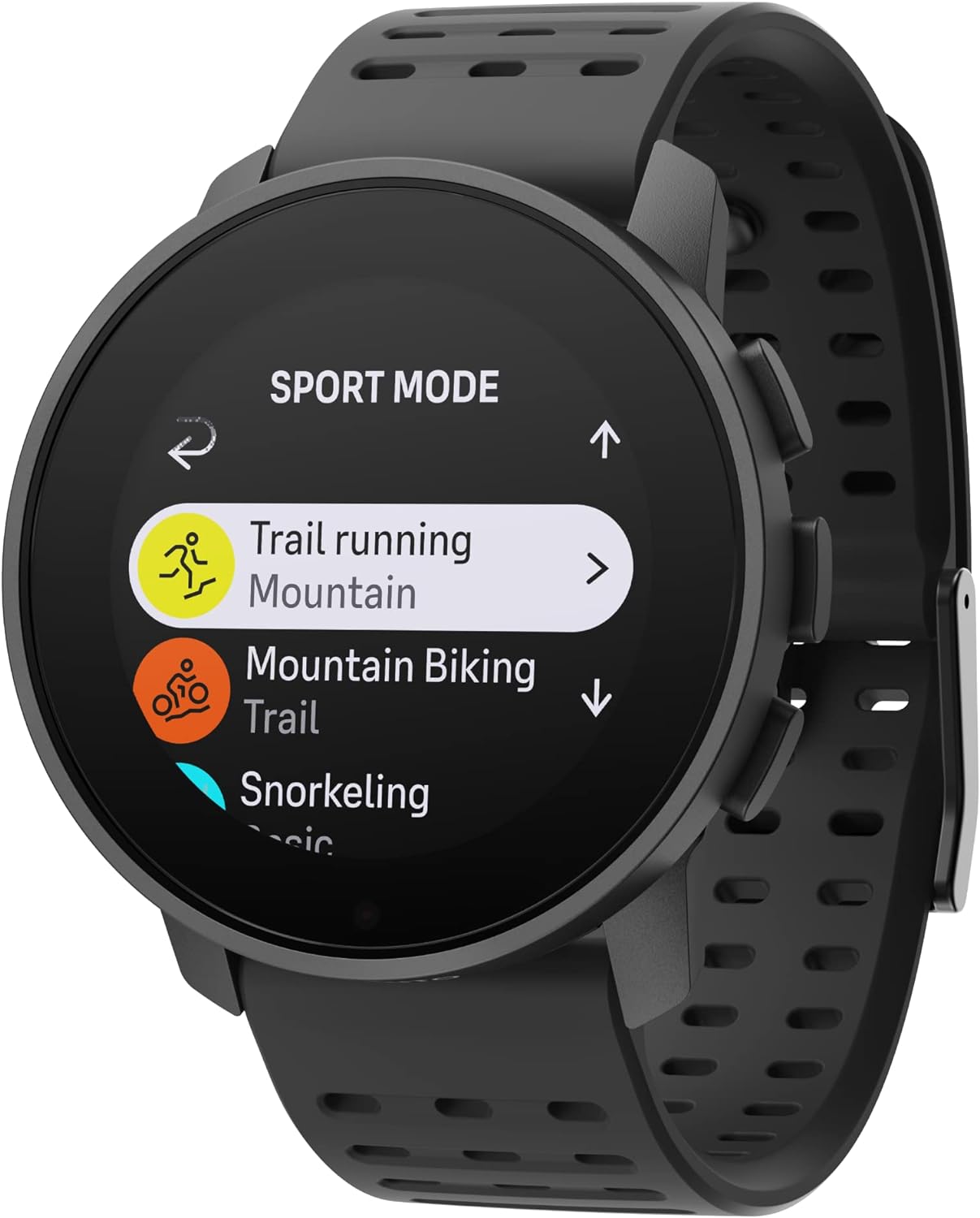 Weight: 1.8 oz.
Weight: 1.8 oz.
Battery: Lithium-ion
Diameter: 43mm
What we like: A feature-rich and sleek design that’s great for everyday use.
What we don’t: Lacks the GPS accuracy and navigational prowess of the Fenix 7 above.
Suunto has long had a reputation for reliable products and accurate tracking, but their watches haven’t always been the most modernized offerings—until the 9 Peak series. The 9 Peak Titanium all but brings the Finnish company up to speed: With a slim profile, sleek titanium bezel, and classy wrist strap, it’s easily one of the best-looking GPS watches here. And on the inside, it’s capabilities are on par with (and in many ways exceed) a design like the Apex 2 above, including multi-GNSS support, breadcrumb navigation, a pulse oximeter, and the ability to choose between power modes to preserve battery life.
One of the 9 Peak Titanium’s most innovative features is Suunto’s Snap to Route setting, which keeps your track aligned to preloaded routes and is especially helpful when you need highly accurate speed and distance data for activities like road races. But while this is a great frontcountry feature, it carries less appeal for backcountry users. It’s also worth noting that the 9 Peak lacks dual-frequency GPS support, which boosts accuracy and is fairly commonplace at this price point. Finally, compared to the Fenix 7 above (which includes preloaded maps rather than a simple line across the screen), the Suunto’s navigation falls far short. But if you’re looking for a capable outdoor watch that also gets the job done for daily use, the 9 Peak Titanium certainly has a lot to offer. Bonus: It's on sale for just $359 on Amazon at the time of publishing, which is truly a steal for such a feature-rich and good-looking design.
See the Suunto 9 Peak Titanium
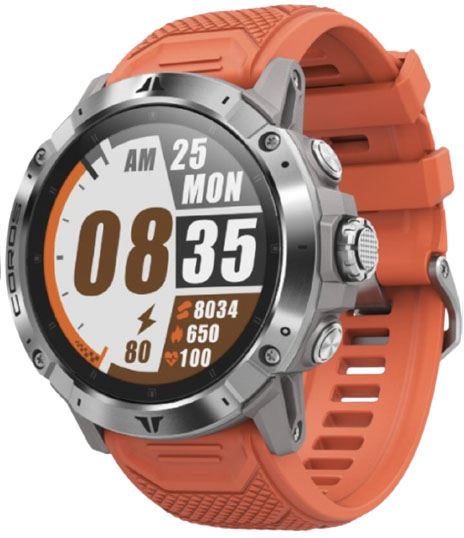 Weight: 3.1 oz.
Weight: 3.1 oz.
Battery: Lithium-ion
Diameter: 50.3mm
What we like: Incredibly durable; great at altitude and in extreme temperatures.
What we don’t: Falls short of the Garmin Fenix 7 in features.
With a steep price tag and rugged, mountain-ready build, it doesn’t take more than a quick glance to see that the Coros Vertix 2 goes head-to-head with our top-ranked Garmin Fenix 7. This is Coros’ premium offering, equipped with all the sensors we look for in a high-end watch, a battery life of 127 hours in GPS mode (the Garmin’s is 57), and great performance in extreme temperatures and at altitude—including SpO2 alerts that help you monitor your blood oxygen levels. To add to its already-impressive durability, the Vertix 2 comes in a Pelican-style hard case, and the rest of the design follows suit with a sapphire glass screen and a titanium bezel and cover. Coros even added a touchscreen, which is especially helpful when using mapping and navigation features. Plus, the large dials are a breeze to operate with gloves on.
Coros's update to the Vertex 2 included a price increase and a number of noteworthy additions. You now get music and preloaded maps (two key features the first iteration lacked), but these improvements have their caveats. To start, Coros does not include location names on their maps, and you don't get turn alerts or turn-by-turn navigation. Second, Coros watches do not offer Spotify, Apple, or Pandora support, making the music feature a bit clunky. Finally, for those who use ANT+ sensors, it’s important to note that the “2” is not compatible. The Vertix 2 certainly is a nice choice for Coros devotees looking for a rugged design to take into extreme environments, but the Fenix 7 is the better all-around design, especially if you plan to use music and mapping functions (not to mention, the Garmin is offered in three sizes in addition to a few solar-powered variations, while the Coros comes in just one model and size).
See the Coros Vertix 2
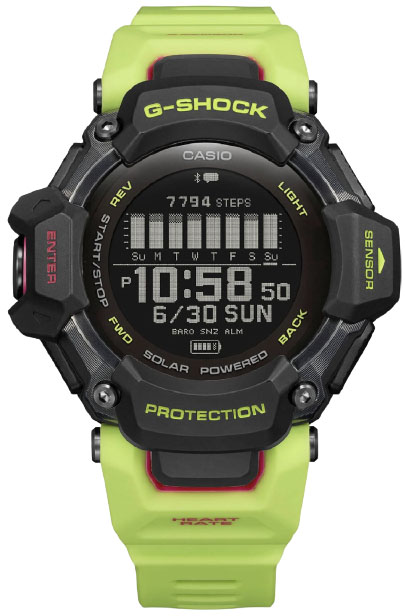 Weight: 2.2 oz.
Weight: 2.2 oz.
Battery: Lithium-ion and solar
Diameter: 60mm
What we like: Hard to kill.
What we don’t: Outdated, heavy, and more expensive than modern options with similar tech.
One of Casio’s latest watches to bear its venerable G-Shock name is the Move GBD-H2000. Building on the brand's initial foray into the GPS world, the Pro Trek WSD-F20, the G-Shock Move GBD-H2000 combines Casio’s trademark durability and solar power with modern touches like activity tracking, heart-rate monitoring, and a variety of additional sensors (including a barometric altimeter and compass, thermometer, and accelerometer). Importantly, the watch also integrates with Casio’s app to make all this data more digestible. And as expected from a G-Shock design, the G-Shock Move GBD-H2000 is about as bombproof as an outdoor watch gets.
Perhaps the most compelling reason to opt for the Casio over other watches here is the rugged and shock-resistant case, which you’ll either love or hate. The G-Shock Move GBD-H2000 also features the most impressive water rating on our list (it can handle pressure up to a depth of 200m), which gives even more credence to its bombproof construction. And finally, with a built-in solar panel, it can last for up to a year of daily use without needing a charge. But in 2024, most of these features are fairly standard in outdoor watches, and the Casio doesn’t offer anything remarkable for $399. In the end, we’re partial to more modern and sleek designs from brands like Garmin, Coros, and Suunto.
See the Casio G-Shock Move GBD-H2000 HR
| Watch | Price | Weight | Battery | Life* | Diameter(s) | Height |
|---|---|---|---|---|---|---|
| Garmin Instinct 2 Solar | $400 | 1.9 oz. | Lithium-ion/solar | Unlimited | 40, 45, 50mm | 14.5mm |
| Coros Pace 3 | $229 | 1.4 oz. | Lithium-ion | 17 days | 41.9mm | 11.7mm |
| Garmin Fenix 7 | $650 | 2.9 oz. | Lithium-ion | 57 days | 42, 47, 51mm | 14.5mm |
| Coros Apex 2 | $349 | 1.5 oz. | Lithium-ion | 14 days | 43mm | 12.8mm |
| Suunto 9 Peak Titanium | $519 | 1.8 oz. | Lithium-ion | 14 days | 43mm | 10.6mm |
| Coros Vertix 2 | $700 | 3.1 oz | Lithium-ion | 43 days | 50.3mm | 15.7mm |
| Casio G-Shock Move GBD-H2000 | $399 | 2.2 oz. | Lithium-ion/solar | 2 months | 60mm | 19.4mm |
Editor’s note: The stated battery life is the manufacturer’s claim while in time mode. When using the ABC sensors, smart features, or GPS, battery life will be reduced.
Everyone on the Switchback Travel team loves to spend time outdoors—especially when it means getting far off the beaten path to enjoy some backcountry solitude. However, as we’ve learned firsthand, route-finding can be downright challenging in remote areas and inclement conditions. With that in mind, we can’t overstate the value of bringing some sort of GPS navigation into the backcountry—whether it be a handheld GPS device or a wearable GPS watch like those featured above. As we covered, GPS watches are highly accurate at pinpointing your location and purpose-built to handle the rigors of outdoor use, but we’ve also grown to love modern features like multisport activity tracking, detailed sleep data, custom workout suggestions, and music storage (among others). Of course, considerations like weight, bulk, and battery life are also always top-of-mind, especially on longer and more gear-intensive missions (like climbing Island Peak in Nepal, which one of our editors did while wearing the Garmin Fenix 7).
This list started in 2015 as a round-up of the best altimeter watches, with former editor-in-chief John Ellings drawing from his extensive experience in the Pacific Northwest backcountry to choose six standouts to feature in the guide. Given the sizable crossover with GPS watches, we opted to revamp the guide in 2024 to exclusively cover GPS-equipped designs, with a separate section in our buying advice on non-GPS (altimeter) watches. Editor Maddie Downie currently manages the guide. A self-proclaimed peak-bagger with big goals of getting to the top of obscure, remote mountains all over Washington state’s North Cascades, Maddie regularly relies on GPS to help her navigate through the backcountry—especially when the trail turns to bushwhacking.
.jpg)
Originally popular in the running and triathlon crowds, there are a growing number of GPS-enabled watches that excel in the backcountry, which was a driving force for starting this guide. In short, these models combine the feature sets of a handheld hiking GPS, altimeter watch, and fitness tracker (some entry-level designs forgo ABC sensors). Compatibility with a range of satellites, including GPS, Galileo, and GLONASS (also known as multi-GNSS support) improve coverage and accuracy. And features like downloadable routes, tracking to recount your travels, and extended battery lives make these ideal partners for hikers, mountaineers, skiers, and ultra-distance athletes. For more fitness-focused options that excel for daily training, see our round-up of the best sports watches.
.jpg)
ABC: Altimeter, Barometer, and Compass
All the watches on this list come with the ABC basics: an altimeter, a barometer that provides measurements of current atmospheric pressure, and a compass. Beyond that, many take it a step further with more detailed data like mapping of elevation gained and lost, as well as shifts in barometric pressure. Finally, it’s worth noting that while all of the picks above come with GPS tracking, there are plenty of non-GPS-equipped ABC watches on the market, many of which will save you a substantial chunk of change. If GPS isn’t a must-have for you, we’ve included a few of our favorite altimeter watches in the "Non-GPS Watches" section below.
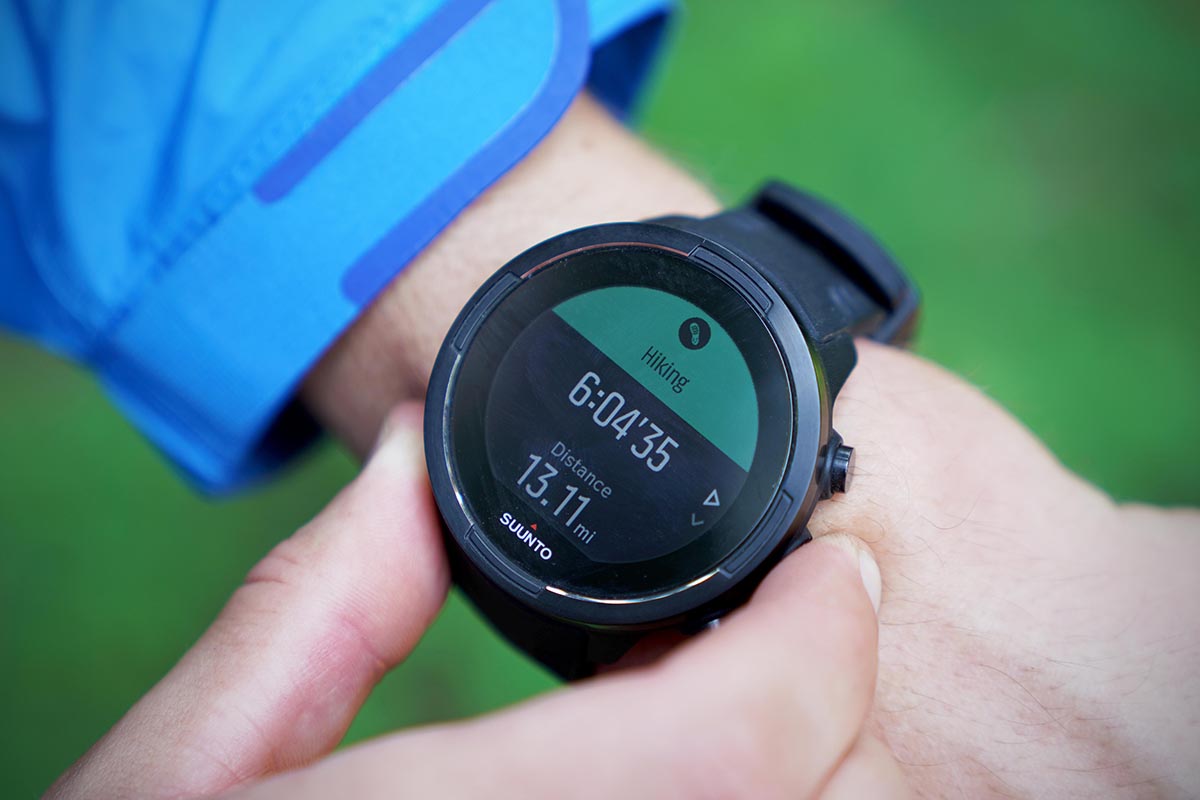
Mapping
One area where GPS-enabled watches vary significantly is in their mapping and navigation abilities. In general, the market can be broken into two categories: topo-equipped models like Garmin’s Fenix 7 that feature detailed contour lines, and simple mapping that includes only a basic line or marker on an otherwise blank screen. Both are useful for following a preset route or retracing your steps with the breadcrumb functionality (which works just as its sounds), but topo mapping provides helpful insights into the terrain, including expected elevation change if you’re off-trail or considering a different route. No matter the respective mapping abilities, as with all pieces of technology, GPS watches should not be relied on as your only source of backcountry navigation—we love using the Gaia app on our phone, and there's always the good old paper map and compass.
.jpg)
Multisport Features
As we touched on above, outdoor GPS models share many features with watches intended for sports like running, cycling, and swimming. High-end designs like the Suunto 9 Peak Titanium and Garmin Fenix 7 can pretty much do it all, with built-in ABC sensors, wrist-based heart rating monitoring with zone recording for training purposes, and dedicated modes for triathletes. Coros’s Apex 2 is a great value option with excellent battery life that excels for long runs, although its user interface is slightly less refined than the more proven Garmin and Suunto models.
.jpg)
Ski Functionality
For winter use, some of the higher-end models from Garmin offer extensive capabilities for activities ranging from XC skiing to resort and backcountry riding. The Fenix 7 line, including the standard and Solar models, is able to record everything from distance covered and elevation change while XC skiing (for both skate and classic) to the number of laps you ski or snowboard at the resort. Taking it a step further, the Fenix 7 has preloaded maps for more than 2,000 ski resorts, which we found provided impressive detail for navigating on-trail runs. And in the backcountry, you can quickly check on data like topo mapping to analyze the steepness of the terrain, barometric pressure, distance covered, and elevation gained/lost throughout the day. Like with the mapping section above, the watch shouldn’t be your only resource for navigating and understanding your winter surroundings, but it’s undeniably a fun and valuable tool in a range of conditions.
.jpg)
Smartphone Connectivity
A final notable feature of many GPS watches is their connectivity to smartphones. Similar to everyday pieces like the Apple Watch, you can pair the two via Bluetooth for receiving notifications like text messages or to download activity data to your phone. Further, some units store and play music (via bluetooth headphones), while others allow you to use the watch face to control music playing from your smartphone. Finally, it's worth noting that the Garmin watches above allow you to connect to popular music streaming services like Spotify, while the Coros models require you to manually upload MP3 files.
.jpg)
Since you’ll be wearing it for extended periods, the physical size of a watch is another important consideration (we’ve included the diameter of each model in our product write-ups, and the comparison table above includes both diameter and height). Even sleeker designs like the Coros Vertix 2 and standard Garmin Fenix 7 take up quite a bit of real estate and can be uncomfortable if you prefer a light and compact shape. The good news is that there are a number of trimmed-down models, including the 43-millimeter Coros Apex 2 and the smaller Garmin Instinct 2S Solar (40mm). You do sacrifice a little screen size and often some battery life in going with the smaller variations, but the trade-off in comfort will be worth it for some.
.jpg)
Closely tied to dimensions is the weight of a given watch. As expected, a lighter and more compact design is one that you won’t notice as often, especially during active pursuits like running, biking, or backcountry and XC skiing. Weight inevitably goes up with more durable and longer-lasting materials, as well as when you select a feature-rich model. Our picks above vary quite a bit, ranging from the hefty Garmin Fenix 7 (2.9 oz.) to the sleek and low-profile Coros Pace 3 (1.4 oz.). Many of our favorites land in between at around 2 ounces, which we’ve found to be a good balance of durability and all-day comfort.
.jpg)
Lithium
Like a smartphone, GPS-enabled watches rely on rechargeable lithium batteries. Traditionally, these watches drain battery life fairly quickly with their digital screens and connectivity to phones and satellites for tracking purposes. As a result, they can only go relatively brief stretches in between charges, although the technology is making big improvements as of late. On the short end, the Suunto 9 Peak Titanium lasts only 14 days as a standard smartwatch, while the Garmin Fenix 7 can stay powered for up to 40 days in Expedition GPS mode.
.jpg)
Solar
Solar comes with the benefits of limiting waste and not having to worry about bringing along a replaceable battery or needing to charge the watch every few days. Not to mention, a self-sufficient little instrument has a simple beauty to it—especially for travelers and extended backcountry trips. You also don’t have to worry about getting the watch its vitamin D that often since many can store a charge for months at a time. Casio is the clear leader in this realm, although Garmin has made serious inroads with their Power Glass technology featured in our top-ranked Instinct 2 Solar.
.jpg)
It’s worth noting that battery life has been improving with just about every new release. Using the Garmin Instinct 2 Solar as an example, the outgoing version maxed out at 54 days in watch mode, while the updated 2 features unlimited battery life. In addition, Suunto, Garmin, and Coros offer battery-saving modes that cut down on smart features and extend the period between when the watch collects your satellite coordinates, thereby increasing battery life. For the aforementioned Instinct 2 Solar, Max Battery GPS Mode boosts battery life up to 370 hours, while the watch's life is unlimited in Expedition GPS Activity mode.
The designs on our list are purpose-built for outdoor use, and as a result, many have a decidedly outdoorsy look to them. However, while options like Garmin’s Fenix and Instinct may look out of place in the office or around town (depending on the town, of course), there are plenty of lower-profile and more everyday-friendly designs to consider. On our list above, a couple sleek standouts include the Coros Pace 3 and Suunto 9 Peak Titanium. For those who don’t need all the backcountry bells and whistles, smartwatch designs like the Apple Watch Ultra 2 (among others features in our sports watch round-up) are a viable alternative.
.jpg)
While GPS watches make a lot of sense for outdoor-goers venturing far off the grid, the reality is that not everyone needs GPS tracking. In fact, there are several upsides to going the non-GPS route, including massive cost savings, superior battery life, and a simpler interface (most have limited to no smartphone connectivity, activity tracking, or music capabilities). Often referred to as ABC or altimeter watches, non-GPS watches are often stripped down to the basics and forego the bells and whistles present in modern GPS-equipped designs.
%20watch%20in%20patagonia.jpg)
In pinpointing some of our favorite altimeter watches, Suunto’s Core is a standout value at $199, offers great accuracy with a premium barometric altimeter, and packs in tons of helpful features. It also boasts a 12-month battery life, which blows non-solar-powered GPS watches out of the water (most ABC watches use coin cell batteries, which last considerably longer than lithium-ion). Casio also makes a handful of well-built and affordable designs, including the Pro Trek PRG-270-1 and Pro Trek PRT-B50. In the end, only you can decide whether or not GPS tracking is worth the added cost and complexity, but the good news is that there are plenty of quality options on both sides.
Back to Our Top GPS Watch Picks Back to Our GPS Watch Comparison Table